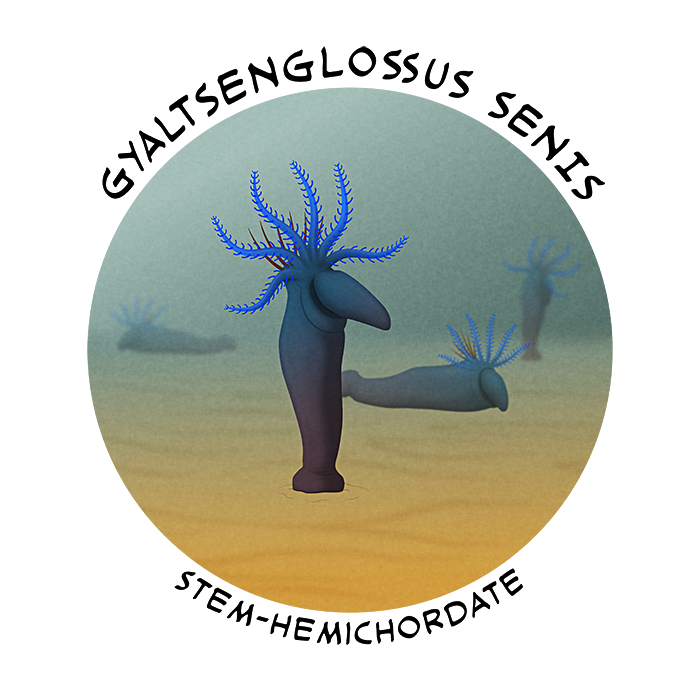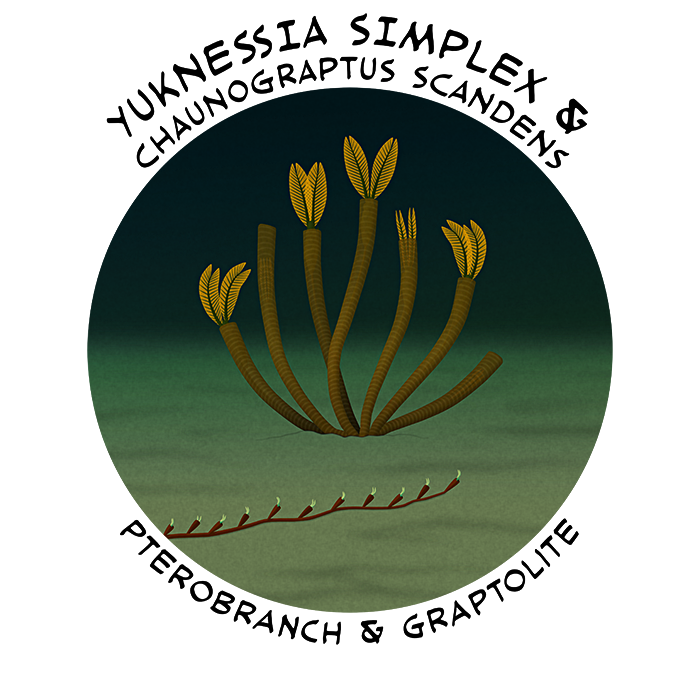Now we get to the bilaterians, all the animals with bilateral symmetry as an ancestral feature.
The hypothetical common ancestor of all bilaterians (the “urbilateria“) was probably a tiny worm-like species, and likely originated sometime in the early Ediacaran Period. The earliest definite body fossils of bilaterians come from about 558 million years ago, and possible burrow traces are a little older, from about 585 million years ago – but it was during the Cambrian Explosion that this group rapidly diverged into a wide variety of forms and ecological niches.
The deuterostomes are one of the two major evolutionary branches of the bilaterians, made up of modern hemichordates, echinoderms, and chordates (including the vertebrates). They split from their last common ancestor with the protostomes sometime during the Ediacaran, but the earliest probable deuterostome fossils are weird tiny potato-like blobs from the very start of the Cambrian.
(…We’ll talk about those later in the month.)
Hemichordates are the closest living relatives to echinoderms, and are a small phylum with only around 130 known modern species (most of which are acorn worms). But in the distant past they were much more numerous, with graptolites being major components of Paleozoic planktonic ecosystems.
All living members of this lineage have a three-part body plan, but they’re otherwise very different in both appearance and ecology. Acorn worms are solitary worm-like animals living on in the sediment of the sea bed, and are mostly detritivores, while pterobranchs are tiny colonial filter-feeders that build protective tubular structures.

But Gyaltsenglossus senis seems to be a transitional form between both of these different lifestyles. Discovered in the Canadian Burgess Shale fossil deposits, this 2cm long (0.8″) hemichordate lived about 508 million years ago and shows a mixture of anatomical features – it had a body and proboscis like an acorn worm, and six tentacled feeding arms like a pterobranch. A bulbous structure at the end of its body may have been used as a temporary holdfast, allowing it to attach itself to the seafloor and raise its arms higher up into the water column.
It wasn’t a direct ancestor to either modern lineage of hemichordates, since actual acorn worms and pterobranchs already existed alongside it, but it instead seems to represent an evolutionary “cousin” stem lineage giving us a glimpse at what the ancestors of the whole group might have looked like. And it suggests that early hemichordates were versatile opportunists obtaining their food from both the water and the sea floor, and during their evolution the acorn worm and pterobranch lineages each became much more specialized for one mode of life or the other.

Yuknessia simplex is one of the earliest known definite pterobranchs, found in both the Burgess Shale in Canada and the similarly-aged Wheeler Shale in Utah, USA (~507 million years ago). It was a colonial species, with multiple cloned zooids living in a cluster of tubes up to about 1.3cm long (0.5″), sometimes attaching to hard surfaces on the seafloor like empty shells.
And Chaunograptus scandens, also from the Burgess Shale, is one of the earliest known graptolites. Its colonies were up to at least 15cm long (6″), but the connecting stem was only a fraction of a millimeter in width.
Although early graptolites like Chaunograptus lived attached to the seafloor, many later forms evolved a free-floating planktonic lifestyle. They became a highly successful group during the Paleozoic, so diverse and distinctive that their fossil remains are often used to date rock layers.
And while they disappeared from the fossil record in the mid-Carboniferous, we now know the group as a whole didn’t go completely extinct – graptolites were actually a type of pterobranch, and modern rhabdopleurids have turned out to be living representatives descended from the early seafloor-attaching forms.
